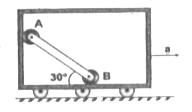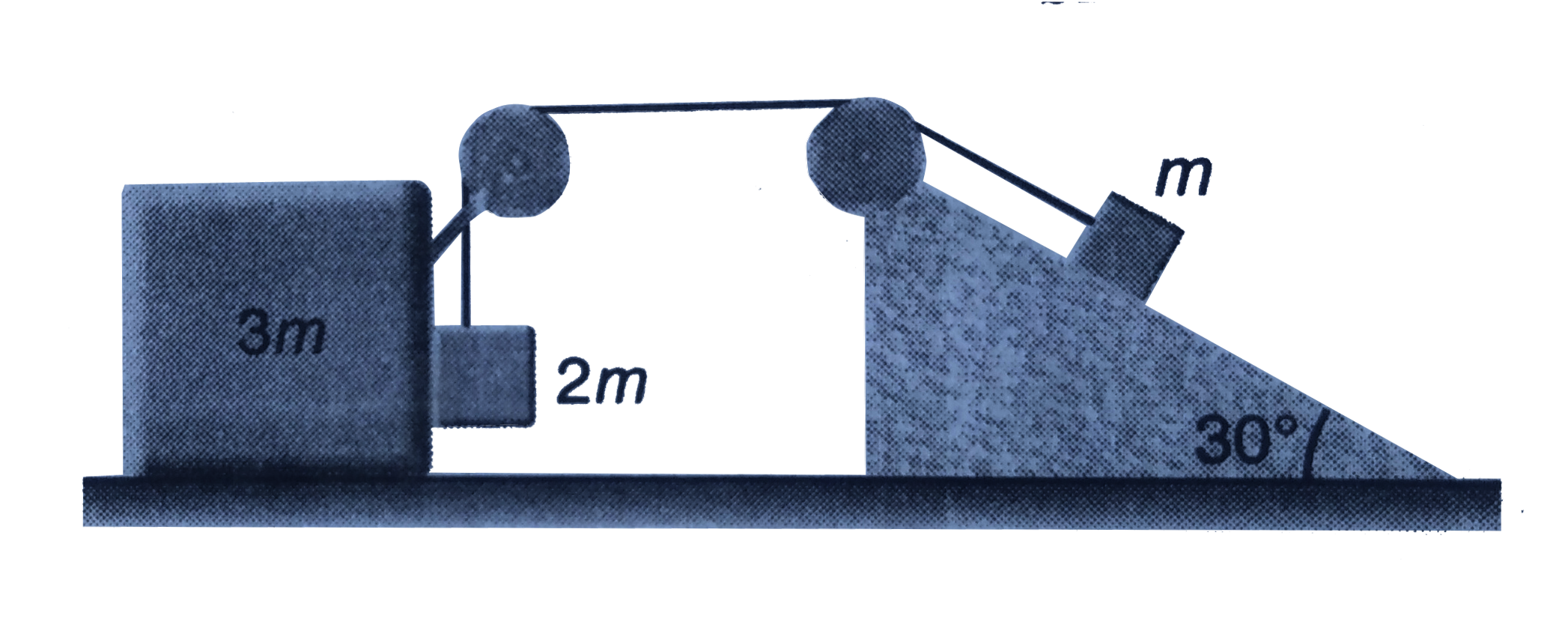A car is moving rightward with acceleration a=g√km/s2 . Find the value of k so that , rod maintains its orientation as shown in the figure. Neglect the friction and mass of the small rollers at A and B.

The correct Answer is:3
Topper's Solved these Questions
- ROTATIONAL MOTIONBOOK - DC PANDEYCHAPTER - ROTATIONAL MOTIONEXERCISE - Matrix Matching Type Questions
17 Videos
- ROTATIONAL MECHANICSBOOK - DC PANDEYCHAPTER - ROTATIONAL MECHANICSEXERCISE - Subjective Questions
2 Videos
- SEMICONDUCTORS AND ELECTRONIC DEVICESBOOK - DC PANDEYCHAPTER - SEMICONDUCTORS AND ELECTRONIC DEVICESEXERCISE - More than One Option is Correct
3 Videos
Similar Questions
If a car is moving rightward with acceleration a=g√km/s rightward as shown in the figure. Find the value of k so that, rod maintains its orientation as shown in the figure. Neglect the friction and mass of the small roller at A and B.

View SolutionIn the figure shown neglecting friction and mass of pulley, what is the acceleration of mass B ?

View Solution
Knowledge Check
In the figure shown neglecting friction and mass of pulley, what is the acceleration of mass B ?
 Ag3B5g2C2g2D2g5
Ag3B5g2C2g2D2g5With what minimum acceleration mass M must be moved on frictionless surface so that m remains stick to it as shown in figure-2.171. The co-efficient of friction between M & m is μ :
 AμgBgμCμmgM+mDμmgM
AμgBgμCμmgM+mDμmgM
In terms of masses m1,m2 and g, find the acceleration of both the blocks shown in Fig. Neglect all friction and masses of the pulley.
View SolutionNeglect friction. Find acceleration of m,2mand3m as shown in the figure. The wedge is find.

View SolutionNeglect friction. Find acceleration of m,2mand3m as shown in the figure. The wedge is find.

View SolutionA block of mass 10 kg, moving with acceleration 2m/s2 on horizontal rough surface is shown in figure

View SolutionA block of mass 10 kg, moving with acceleration 2m/s2 on horizontal rough surface is shown in figure

View SolutionTwo block of masses m1 and m2 are in equilibrium. The block m2 hangs from a fixed smooth pulley by an inextensible string that is fitted with a light spring of stiffness k as shown in fig. Neglecting friction and mass of the string, find the acceleration of the bodies just after the string S is cut.

View Solution
